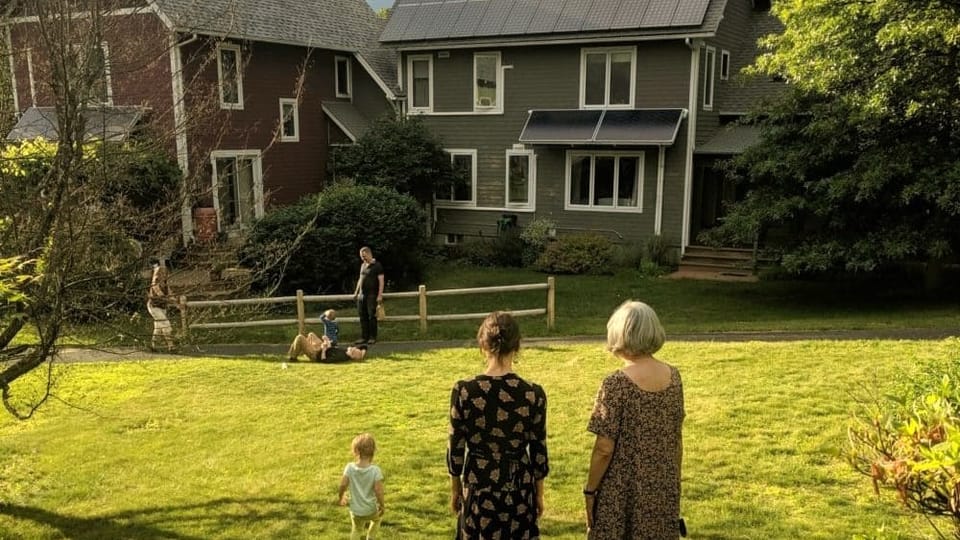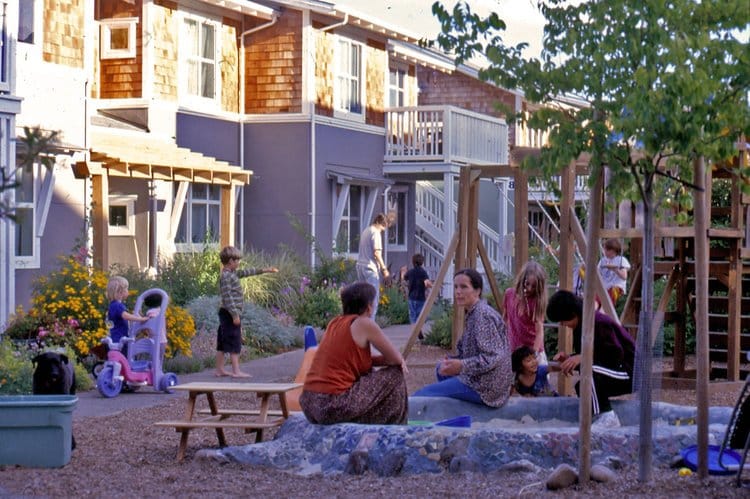Pressure’s On: The Sandwich Generation

The squeeze.
American parents are struggling. So much so, the U.S. Surgeon General issued a warning about it last year. The many-year marathon of raising children has always been hard, but today’s parents often find themselves in the uniquely high-stress position of raising children while caring for aging parents. Two social workers, Dorothy Miller and Elaine Brody, coined the term “sandwich generation” in 1981 to describe the cohort of adults in their 30s and 40s—at that time, virtually all women—providing dual-generation care. Since the 80’s, the ‘sandwich’ phenomenon they observed has become both more common and more acute:
“People are having children later, and they are living longer, often with care-intensive conditions such as dementia. That means many are taking care of elderly parents when their own kids are still young and require more intensive parenting—and for longer stretches of their lives than previous generations of sandwiched caregivers.” — Wall Street Journal
Today, more than half of Americans in their 40s and 27% of those in their 30s are ‘sandwiched’ between an aging parent and their own children. As in Miller and Brody’s day, the caregiving responsibilities largely fall on women. Modern men are doing more caregiving than their fathers before them, but women are still overwhelmingly the primary caregivers, and they spend twice as much time providing care than men. Some of this gap is natural and obvious—only female-bodied people can breastfeed—but a lot of it is cultural and insidious. Working women still spend twice as many hours per week on childcare and household chores as compared to working men.
The invisible work.
Then there’s the “mental load,” a concept that has gained traction lately, building upon Dr. Arlie Russell Hochschild’s concept of “emotional labor” first published in 1983. It refers to the fact that women carry a disproportionate burden of cognitive and emotional labor within families and relationships—things like remembering occasions, scheduling appointments, soothing upsets, meal planning, and tracking family finances. This “invisible work” is one of the reasons why the gender gap in the workplace persists. Women often scale back their careers or leave the workforce altogether due to the strain of juggling these responsibilities. This isn’t exactly a choice—it’s a necessity borne out of the unrelenting demands of caregiving.
The policy solutions.
So, what can be done to ease the burden on parents, especially women?
Democrats often advocate for increased childcare and dependent care tax credits to subsidize the cost of care provided by a family member, neighbor, or professional. Republicans support expanded tax credits, too, but have also proposed incentives for one parent to stay home while the other works. In February, Senator Jim Banks of Indiana introduced a bill that would effectively provide compensation to parents who choose to stay home to care for their children. Then in April, Congressman Riley Moore and Senator Mike Lee proposed amending the Family and Medical Leave Act (FMLA) to exempt new parents from paying back health insurance premiums to their employers, should they choose not to return to work after their child’s birth. The truth is, we need all of these solutions and more (such as subsidies to childcare centers themselves) at meaningful dollar amounts if we want to create a child-friendly society. The key is not to privilege one solution over another or to specify gender roles, but to provide choices and flexibility for families to decide what works best for them.
“True empowerment means giving people the choice to live their lives in ways that make sense for them—whether that’s staying home with their children, working, or something else entirely.” — Melinda French Gates
The multigenerational living solution.
Multigenerational living, where three or even four generations live in close proximity, is a more bottom-up, organic solution to the sandwich generation’s caregiving crunch. This arrangement creates a natural support network where elder care and child-rearing can be distributed more efficiently, both emotionally and financially.
In Rekindle’s vision, that support network extends to a tight-knit community of about 150 friends and neighbors who have also subscribed to the village ethos, plus on-site paid options for professional childcare and elder care. Imagine if your forgetful but otherwise healthy father could stay in his own home for another 10 years because you, your neighbor, or a home health aide can stop by with his medications every day? Or if your ailing mother in her 80’s could receive advanced care a few doors down from her apartment, which is just a few doors down from yours? Or picture a scenario where your children grow up surrounded by a community of like-minded parents, neighborhood kids, and proxy grandparents, making it easier to share responsibilities and lighten the load.
The model works on proximity—when families and communities live close together, the logistical hurdles of caregiving become more manageable. Shorter distances reduce friction. Longer distances require more planning, travel time, and often involve committing to more substantial events. Proximity also makes caregiving more enjoyable and fulfilling. Throwing an impromptu potluck and watching children in a group of parents feels less like work and more like leisure. Older children can help look after younger ones, providing them a sense of responsibility and community leadership.
Finally, the multigenerational model of care is easier on the pocketbook. The median cost of assisted living in Massachusetts, our prototypical New England state, is nearly $83,000 a year, and the average annual cost of full-day childcare ranges from $18,000 for a 4-year-old to almost $27,000 for an infant. If the sandwich generation can shave down those costs any amount through their support network of family and friends, the savings can go toward other things, like housing. The median price for an existing single-family home in Mass is currently around $750,000, so if your typical three-generation family buys two of those—one for the Millennial parents with children and one for the Boomer grandparents, they’re collectively spending $1.5 million to house, say, six people. Now imagine if, instead of buying two entirely separate houses, each branch of the family got a condominium—median price $527,000—and those condos included access to considerable shared space like co-working lounges, guest cottages, and multiple acres of verdant grounds to more than make up for the lack of private home offices, guest bedrooms, and yards. You’ve saved about $450,000 before factoring in smaller but non-trivial cost-sharing opportunities that stem naturally in an intentional community—think cars, bikes, and scooters; lawn mowers and power tools, group meals, and of course, caregiving favors.
Where American women cite family responsibilities (58%) and money (50%) as their two main sources of stress, multigenerational living could be our greatest tool to improve their overall quality of life. Numerous studies of parental mental health suggest that their children, spouses, employers, and wider communities would benefit, too. It's time to rethink the most basic determinant of how we live—our housing—to better support parents, especially mothers, and build a healthier, happier society.

